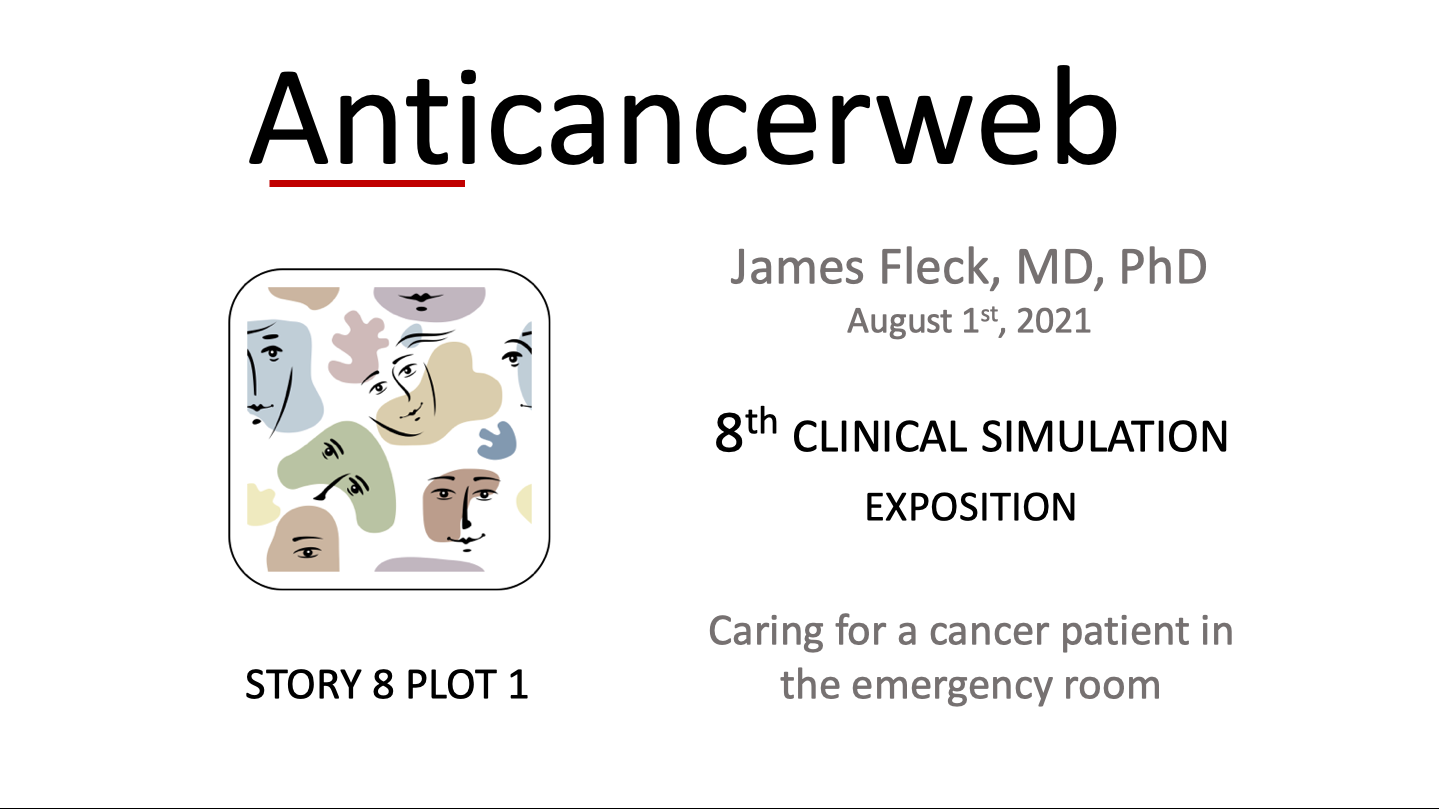
A Lotus Flower | Exposition
Emergency care must resolve the patient's immediate complaints and initiate diagnostic investigation
(Fictional narrative by the doctor)
James Fleck: Anticancerweb 01 (08), 2021
The month of June was just beginning. Seasonally, it was associated to a higher risk of pneumonia in southern Brazil. It used to be characterized by a sudden drop in temperature in a naturally humid climate. Hospitals reached maximum occupancy. I was the physician-in-charge for the oncology department at our university hospital. Our service capacity was exhausted. There were no more beds available and my residents took turns caring for patients under my responsibility and guidance. Fortunately, we had highly qualified residents who had gone through at least two years of previous training in internal medicine before being judiciously selected for our oncology fellowship. They were very committed to patients, always available and strongly motivated to provide the best care. Multidimensional training guaranteed technical and affective assistance to a population of very needy patients.
Mark, a 28-year-old clinical oncology fellow, spent the day seeing patients in the ward. It was eight o'clock at night and he was about to leave when he was called to the emergency room. He quickly arrived there and meet the physician on duty who reported Robert's clinical case.
Robert was a 23-year-old young man, who had arrived at the emergency room about one hour ago with clinical findings suggestive of pneumonia. He was coughing, had purulent sputum, and a fever of 102.2°F. He complained of moderate pain throughout his left hemithorax and was clearly suffering from shortness of breath. Sputum bacteriological examination had already been collected and empirical antibiotic therapy had been started. On physical examination, an extensive pleural effusion was detected, filling the entire left hemithorax. A chest X-ray confirmed the clinical finding. The doctor on duty also identified a tumor in Robert's right testicle and therefore ordered an oncological evaluation.
Mark contacted me and we made the decision to drain the pleural effusion to relieve the compression on the left lung. Robert would not sustain that condition for long, since his blood oxygen level was below 60 mm-Hg and his heart function was unstable. I went to the hospital to perform the procedure, with the help of an interventional radiologist. Almost one liter of a cloudy fluid was extracted from Robert’s pleural cavity. Robert had a rapid improvement in his respiratory function. His hemodynamic status has stabilized, giving us the necessary time to conduct a more specific diagnostic investigation.
Robert was admitted to the emergency room, transferred sequentially to the ward, remaining under the care of the oncology department. Mark had already taken a blood sample to assess blood counts, kidney and liver function. I suggested adding the assessment of testicular tumor markers, considering the previous clinical findings. The most important tumor markers are beta human chorionic gonadotropin (HCG) and alpha-fetoprotein (AFP). Both would be very important for further monitoring Robert's treatment. We also requested CT scans of the chest and abdomen. Once we'd handled the situation, I asked Mark if he had any contact with Robert’s family. He informed me that Robert had arrived at the emergency room alone and that when asked about a family contact, he had provided a mobile phone number that was not answering.
To be continued in PLOT 2 (raising action) …
* Attention: The story 8 will be published sequentially from PLOT 1 to PLOT 6 and you will always see the most recent posting. To read Story 8 from the beginning, just click in the numbered links located at the bottom of the homepage.
© Copyright Anticancerweb 2021
James Fleck, MD, PhD: Full Professor of Clinical Oncology at the Federal University of Rio Grande do Sul, RS, Brazil 2021

Please login to write your comment.
If you do not have an account at Anticancerweb Portal, register now.